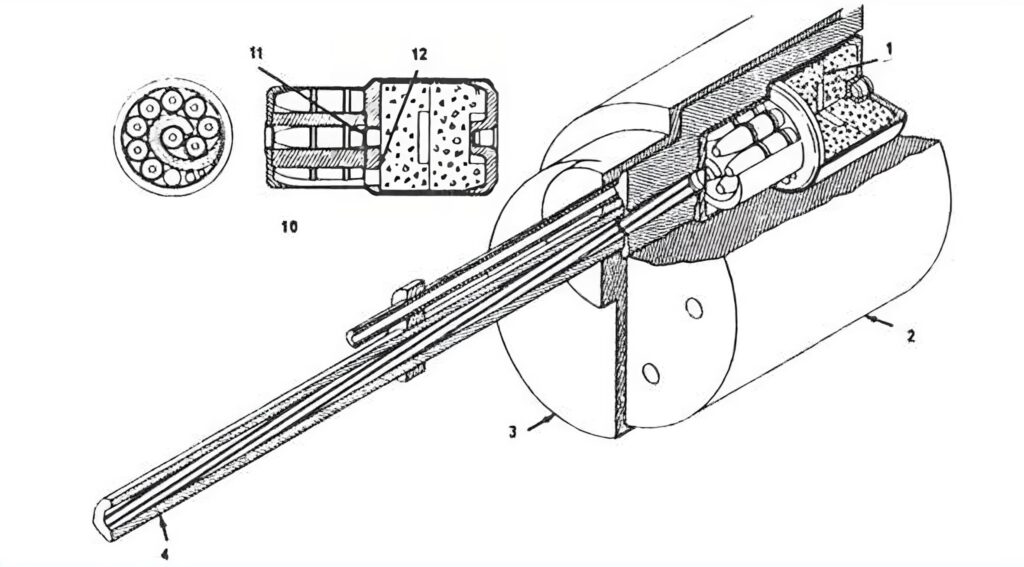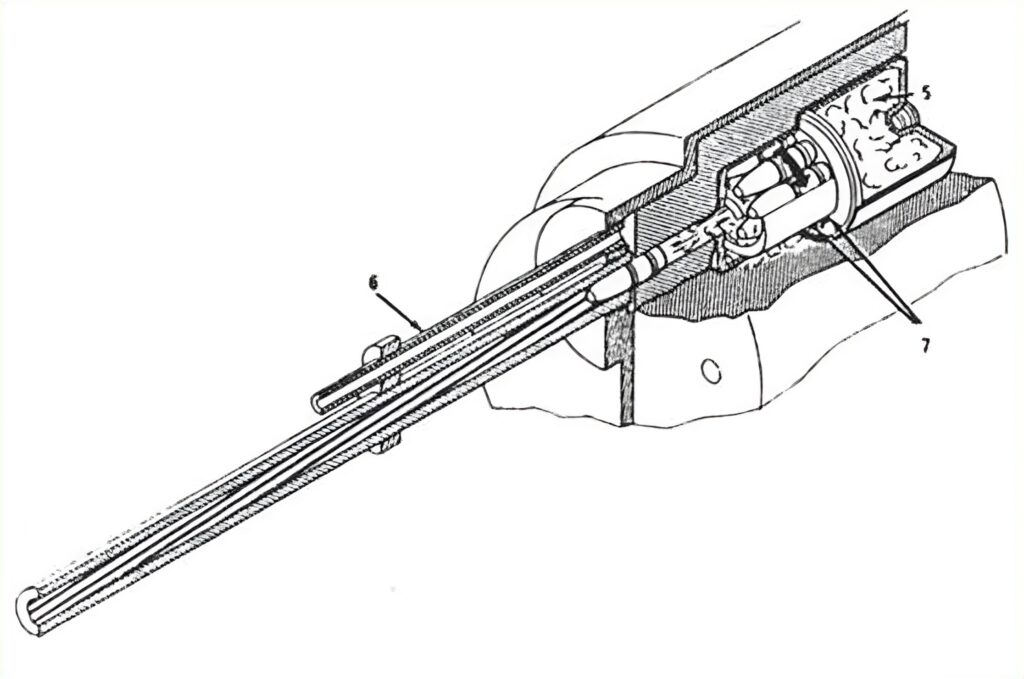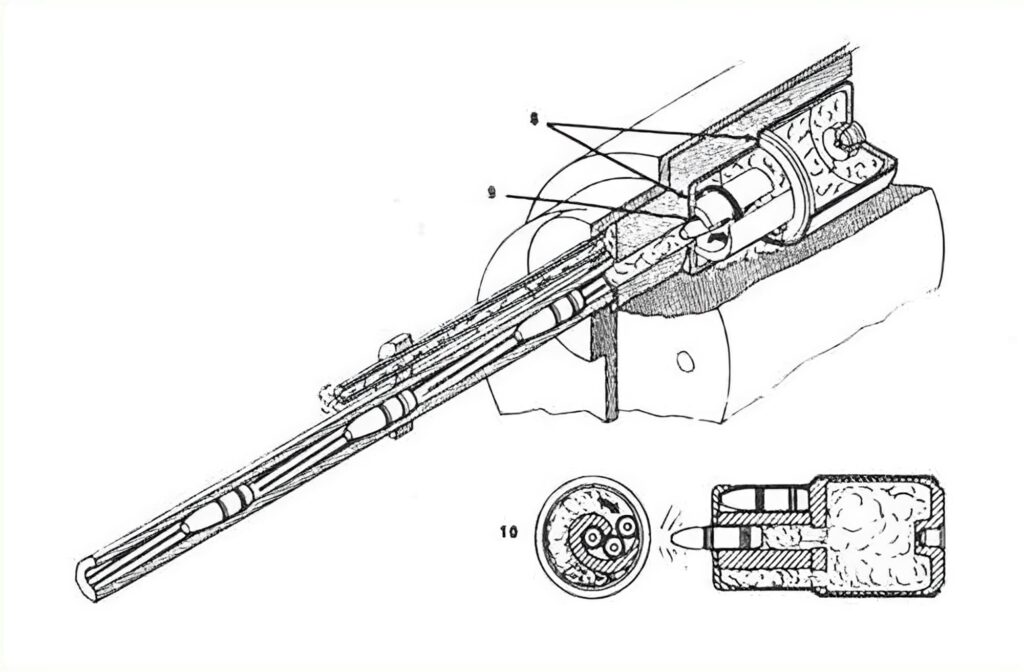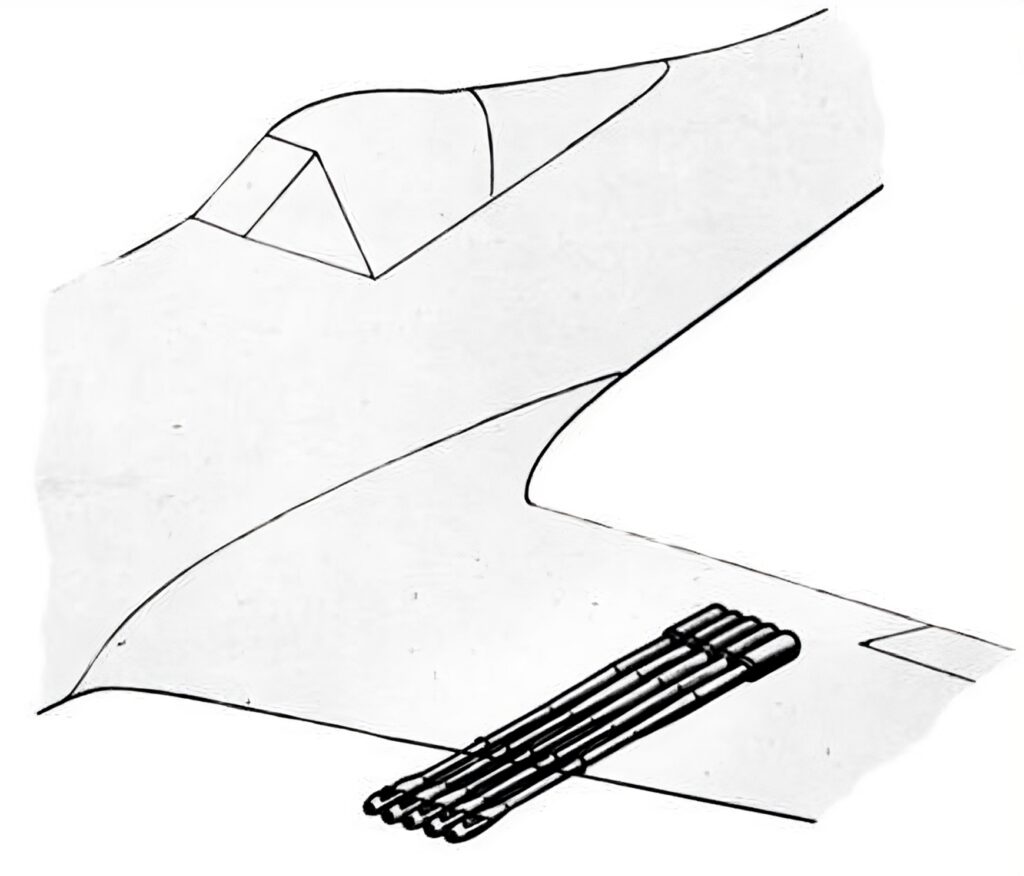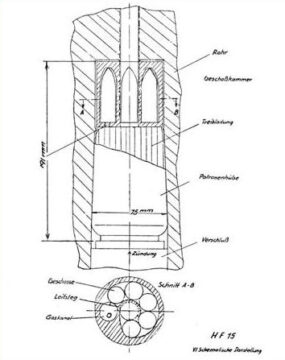The gun often credited with the highest rate of fire during the 2nd world war is the Soviet ShKAS aircraft machine gun with a rate of fire of 1800 RPM, or 3000 RPM with the beefed up but unreliable UltraShKAS. However this was dwarfed by the HF 15, which achieved a rate of fire somewhere between 15000 and 38000 RPM, depending on the source. By comparison, the GAU-8 achieves up to 4800 RPM and the M134 Minigun achieves up to 6000 RPM.
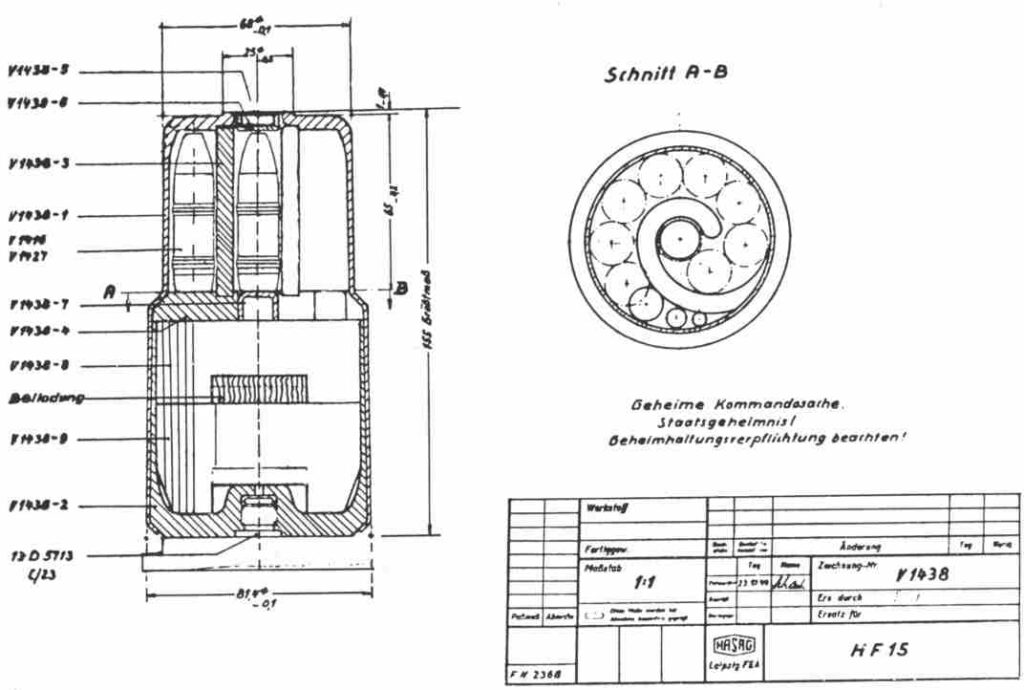
The project was highly secretive and even today sources are scarce, and not always consistent with each other. The information in this article may thus not be completely accurate.
Development of the HF 15
The original idea of the Sonderwaffe Höhe Feuerfolge 15 (Special purpose Weapon, High rate of Fire 15) was conceived by a Hungarian Artillery officer, Major Zettle somewhere in the early 1940s. The development was continued by Gustloff Werke Suhl-Thüringen between August of 1944 and the beginning of 1945.
The cartridge would be placed behind a MG 151/15 barrel, with 7 15mm HE/INC rounds in a spiral shape, with 7 layered charges behind it, separated by 6 inhibitor disks which would create the sawtooth shaped pressure curve required. Upon ignition, the 1st charge would fire the first bullet. The explosion would, via a 2nd channel, push the next bullet into the stream and would fire it with the next disc. This process repeated until all bullets were fired.
| 1 | Propellant Charge | 7 | Second channel for pushing a new bullet into the chamber |
| 2 | Housing Drum | 8 | Cartridge casing |
| 3 | Casing | 9 | Bullet fired by the gas pressure |
| 4 | Barrel | 10 | See trough of the bullet chamber + cartridge |
| 5 | Expanding propellant gases | 11 | Primary channel for pushing out the bullet |
| 6 | Overpressure equalization pipe | 12 | Second channel for pushing a new bullet into the chamber |
The weapon was produced in small numbers, and firing tests indicated major flaws with the weapon. Initially projectiles without driving band were used, resulting in heavy oscillation and mutilation of the bullet. This was proposed to be remedied by using conventional driving bands. However the war ended before the improvement could be tested and no known combat use of the weapon exists.
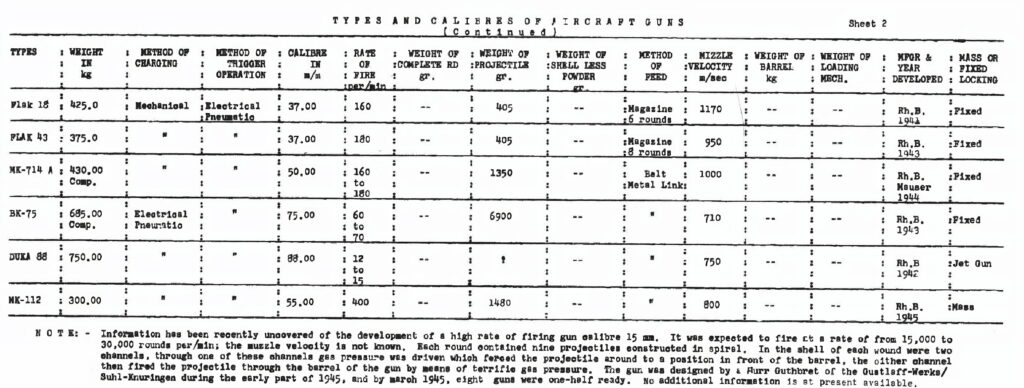
The only known installation was in two sets of five HF 15s under the wings of a Focke-Wulf Fw 190F-8.
Sources
- Miranda, J. (2013). The ultimate Piston fighters of the Luftwaffe. Fronthill Media.
- Hoffschmidt, E. (1969) German Aircraft Guns and Cannons- WWI – WWII. WE Inc.
